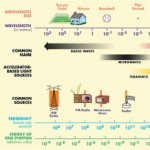- This topic has 4 replies, 4 voices, and was last updated 9 years, 9 months ago by
 MHD NA.
MHD NA.
-
AuthorPosts
-
-
January 29, 2016 at 6:54 am #29342
 web servdParticipant
web servdParticipantHi,
I am using OptiFDTD to simulate a novel structure. When I watched those demo videos on this website, I found that the field evolution is shown during the simulation. But…I can not find it in OptiFDTD 12. Could you please tell me how to enable it?Thanks!
It is shown here. From 20s to 30s in the video.
https://youtube.com/watch?v=t2XIE1eNXd4%3F -
February 1, 2016 at 9:22 am #29377
Damian Marek
ParticipantThat was the interface for the 32 bit version. This visualization was removed because it was decided that it impacted the performance of the simulation too much. Now you have the option of generating a video file that will display the field evolution as a function of time. In the Observation Areas you can choose to record certain components, under the Recording Data Components tab. When the simulation is run the video file is generated. You can play the movie file while the simulation is still running with VLC player. Other players require file to be finished but VLC can play the incomplete file without problem.
-
March 18, 2016 at 9:48 pm #33189
 web servdParticipant
web servdParticipantgood. thanks so much!
-
March 19, 2016 at 3:29 am #33190
 SAHIL SINGHParticipant
SAHIL SINGHParticipantHi Darmain Marek,
Thank you so much for such valuable information.. Your efforts are highlu appreciated…
Regards
Sahil Singh
-
March 20, 2016 at 9:34 am #33302
 MHD NAParticipant
MHD NAParticipantThis visualization was removed because it was decided that it impacted the performance of the simulation too much. Now you have the option of generating a video file that will display the field evolution as a function of time. In the Observation Areas you can choose to record certain components, under the Recording Data Components tab. When the simulation is run the video file is generated. You can play the movie file while the simulation is still running with VLC player.
-
-
AuthorPosts
- You must be logged in to reply to this topic.

